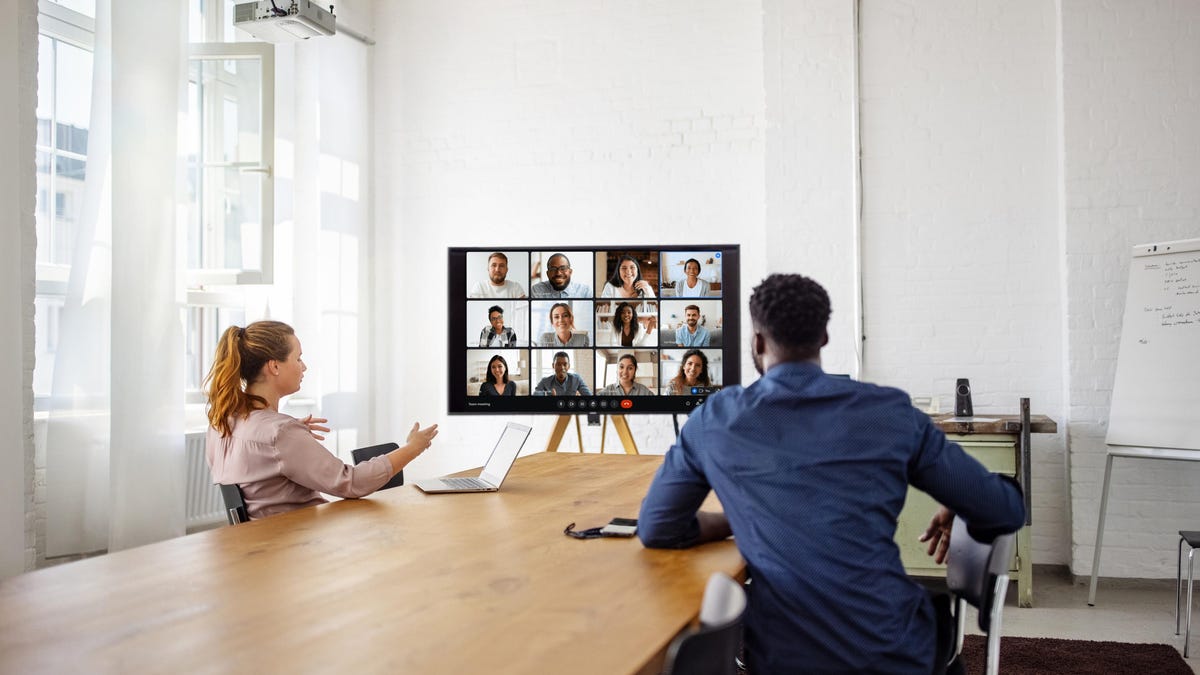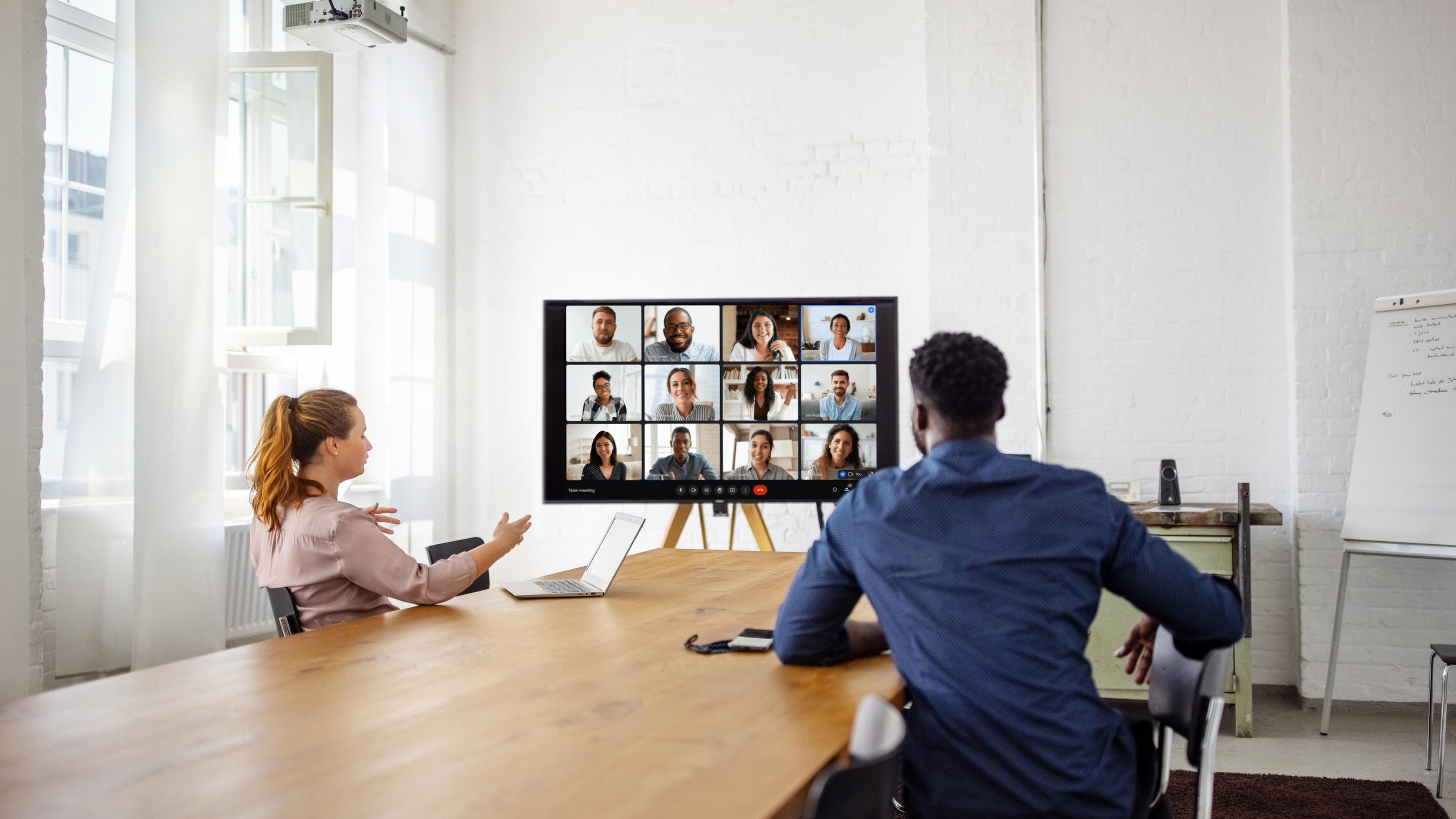
The traditional work model was disrupted by the pandemic, but a new era of work is emerging. Here are four predictions about what’s to come.
Hybrid work has become a mainstream conversation for organizations everywhere.
Google Cloud
Few business leaders would deny that work has been fundamentally transformed over the past 16 months, but the discussion about hybrid work sometimes makes it sound like distributed teams are something new. From a certain vantage point, hybrid work began in 1979, when IBM allowed five of its engineers to work from home with mainframe terminals. That experiment paid off, and as the 1980s and 1990s unfolded, many companies invested in telecommuting and fully remote teams. The idea that hybrid work is the next great disruptor is based on a view that feels mired in an era of siloed, at-your-office-desk collaboration.
What is different, though, after a forced global experiment in remote work, is that hybrid work has become a mainstream conversation for organizations and analysts everywhere. For decades, remote workers often felt like they were on the sidelines of conference calls and, more recently, in virtual video meetings. If they were lucky, they were digital squares on a large monitor in a conference room at HQ, where their in-person colleagues dictated the flow of the conversation and decision making.
All that is changing, with companies now making serious investments in enabling all the places and ways that work happens. Here are a few ways that anywhere, anytime work may take shape.
The traditional workday may become a thing of the past
Table of Contents
It’s no accident that the traditional workday has been tied to hours of daylight and the proliferation of electricity. Although technology has long allowed us to work from anywhere, at any hour of the day, our cultural and employment norms have lagged behind. The pandemic has shifted all of that.
More than ever, our wellbeing and personal obligations are being given new importance as we reshape the employer-employee relationship. Employees want the ability to design their work week in order to stay as productive (measured by outcomes, not merely output) and as happy as possible.
More than ever, our wellbeing and personal obligations are being given new importance as we reshape the employer-employee relationship. Employees want the ability to design their work week in order to stay as productive (measured by outcomes, not merely output) and as happy as possible. In my last conversation with HR leaders across the EMEA region, they outlined their work on new models that let employees choose when they work, without defining a fixed schedule. Countries like Iceland switched to a four-day work week while not only increasing wellbeing and employee satisfaction, but also maintaining productivity. Companies elsewhere might consider this option as a way to meet the surging demand for employee flexibility. The future of work is “flexibility first,” letting employees decide when and how they can deliver their best.
Hybrid and remote options are no longer the exception
According to a recent Harvard study, 81% of employees either don’t want to go back to a five-day work week in the office or would prefer a hybrid schedule going forward. As employers adapt to this new reality, they’ll have to reimagine their uses of technology and physical spaces.
We’ve observed that distributed teams are more successful when they have access to simple but powerful features, such as the ability to indicate where and how you’ll join a meeting, location indicators in your calendar, and the ability to flexibly pin your presentation and people’s faces during a virtual meeting. Moreover, as technology becomes increasingly customized for hybrid environments, I expect new approaches and technologies will reduce context shifting and help people stay focused while they collaborate. This progress will build on ongoing advances in collaboration platforms that bring the relevant information, people, and conversations to the places where people are already working together, instead of making them chase each other across a multitude of apps.
Employers will want to ensure that every employee can participate fully in a meeting or brainstorming session, no matter where they’re working or the device they’re using.
Meanwhile, physical spaces, from conference rooms to personal workspaces, will need a refresh. Employers will want to ensure that every employee can participate fully in a meeting or brainstorming session, no matter where they’re working or the device they’re using. They’ll also want to make sure that a commute to the office is worth an employee’s time and attention. This may lead to a modular approach to workspace design, so that teams can quickly build their own environments with Lego-like moveable furniture to suit the collaboration task and group of people at hand.
Diverse and inclusive teams will be designed into the work blueprint
More than ever, jobseekers are looking to work for organizations that have a clear commitment to diversity, equity, and inclusion (DEI). Not surprisingly, technology will play a big role in the future of DEI, helping to make it an inherent part of processes and tools. For example, AI will help reduce the challenge of unconscious bias in recruiting, and data analytics will offer details on a company’s current DEI situation. Or, on the inclusion front, more businesses are adopting tools that let people know if they did most of the talking or interrupted people during a meeting. Real-time data and analytics may just improve human outcomes when it comes to implementing the best of DEI.
We’re already seeing features like live captions and translations in virtual meetings, or language suggestions in apps like Google Docs to make communication more inclusive, but I think DEI will become a more integrated part of the technology stack that enables anywhere, anytime collaboration.
The tradeoff between security and flexibility will cease to exist
With so many employees still working from home, companies need tools that enable seamless and fast collaboration from anywhere. As a recent study showed, at-home employees think productivity is increasing with the right tools. But many IT departments are still struggling to keep up as they chase VPN upgrades or try to develop a governance model for the employees wanting to use any device to do their work. The tradeoff between security and flexibility has often meant that collaboration takes a hit when workers are forced to connect to a corporate network through a VPN in order to access the information and conversations they need.
Many organizations, including Google, are avoiding this tradeoff by taking a new approach to enterprise security. Google pioneered Zero Trust security and we’ve made it available to customers and organizations around the globe. By shifting access controls from the network perimeter to individual users, it’s possible to enable secure work from any location without the need for a traditional VPN.
The future of work will be less about accessing files living behind a corporate firewall and more about enabling secure interactions by default, from any web browser on any device.
As organizations across the globe adapt to the new landscape of work, I’m excited to see the rate of innovation, inclusion, and flexibility accelerate.
See how you can build a flexible, innovative solution for your organization at workspace.google.com.







